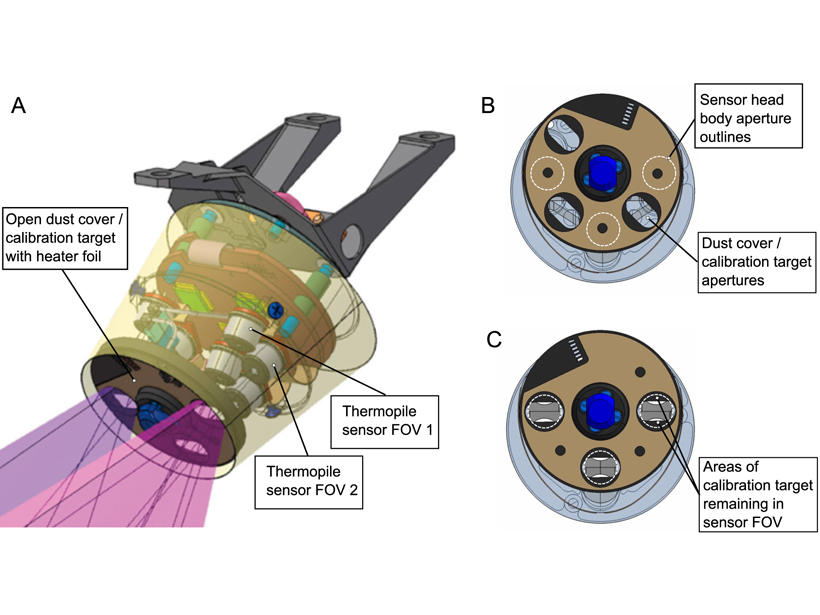Source: Earth and Space Science
The Mars InSight Lander was designed to measure the thermal gradient and conductivity of Mars’ surface in order to improve our understanding of Mars’ heat flow and thermal evolution. Mueller et al. [2020] present a careful analysis of the calibration, or precise adjustment, of the Heatflow and Physical Properties Package (HP³) Radiometer on the Mars InSight Lander. The HP³ radiometer was designed to observe the surface brightness temperature and derive the thermal properties at the landing site.
The authors present comprehensive descriptions of the self-calibration techniques applied to the radiometric data acquired on the Martian surface, including details of the instrument design, the ground calibration tests, and the Mars surface radiometric self-calibration results. They demonstrate an increase in the sensitivity of one of the Lander’s broadband sensors since the ground calibration tests and show that the calibration coefficients likely have varied in response to dynamic environmental conditions.
Citation: Mueller, N. T., Knollenberg, J., Grott, M., Kopp, E., Walter, I., Krause, C., et al. [2020]. Calibration of the HP3 radiometer on InSight. Earth and Space Science, 7, e2020EA001086. https://doi.org/10.1029/2020EA001086
—Kristy Tiampo, Editor, Earth and Space Science
Text © 2020. The authors. CC BY-NC-ND 3.0
Except where otherwise noted, images are subject to copyright. Any reuse without express permission from the copyright owner is prohibited.

